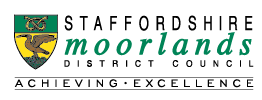Many parts of the UK are smoke control areas where you cannot release emissions of smoke from a chimney attached to a building.
In a smoke control area if you burn solid fuel, you can only burn authorised fuel or use an exempt appliance, eg burners or stoves.
You also need to ensure that you do not cause a Statutory Nuisance to others.
If you emit smoke from a chimney attached to a building in a smoke control area you could be issued with a financial penalty of between £175 to £300.
If you buy an unauthorised fuel for use in a smoke control, unless it is to be used on an exempt appliance, you could be fined up to £1000.
If the smoke amounts to a Statutory Nuisance, you could be fined up to £5000.
Find out if you live in a smoke control area
Use our interactive map to find out if your property or business is in a smoke control area.
When the map has loaded, you will need to first select the question "Is my property in a Smokeless Zone?" Once selected this will display the smoke control areas and you will be able to scroll through and zoom in or out or use the search function to search for a specific address.
From desktop and laptop computers the question appears on the left hand side of the map and search bar is at the top of the map.
From mobile devices you will need to press the menu button (3 dots) at the bottom of the map first to display the question. To search for a specific property click the magnify glass also at the bottom of the map and the search bar will appear at the top of the map. The search results will display at the bottom of the map.
Burning in open fires and solid fuel stoves
Whether you are in a smoke control area or not, you should still take steps that will help reduce costs, improve safety and reduce air pollution. This includes:
Maintaining your appliance regularly
Having your chimney swept on a regular basis (it is recommended that you use a qualified chimney sweep)
Only burning the correct fuel - do not burn waste wood or household rubbish. For wood, look for the "ready to burn" logo.
Having dry storage for your fuel and ensure wood is seasoned (dried) before use (dry wood should have 20% moisture or less).
Follow the manufacturers recommendations for lighting your appliance.
The following schemes and guidance provide further information if you use an open fire or solid fuel appliance:
UK Air Burn better: Making changes for cleaner air
This websites outlines some easy steps you can take to improve the way you burn on your open fire or wood burning stove.
DEFRA: Open fires and wood-burning stoves - A practical guide - Is a short guide providing simple guidance to reduce environmental and health impacts as well as benefiting those using open fires and wood burning stoves.
'Burn Right' - Is a national consumer awareness campaign with a number of helpful video tutorials and practical guides aimed at reducing costs, improving safety and reducing air pollution from open fires or woodburning stoves. They have also produced a 'Practical Guide if using woodburning stoves or open fires'.
Woodsure 'Ready to Burn' - Promotes the sale and use of good quality dry wood, which has lower emissions than wet wood - look out for the logo on packaging. The following 'Dry firewood video' highlights the benefits of burning dry firewood.
'Ecodesign Ready' - is a scheme to identify stoves tested to the high emission standards of the Ecodesign Directive due to be introduced in 2022, some stoves already meet this standard.
In addition you may come across the "Clear Skies Mark" for solid fuel appliances. Certified appliances at level 3 or above are Ecodesign compliant and Defra Exempt. The different levels in the scheme allow you to identify how far beyond Ecodesign criteria they go in terms of reducing emissions and increasing efficiency. Further information on the scheme, the levels and a list of certified products can be found on the Clear Skies Mark website.
ENplus is a certification scheme for wood pellets used in biomass boilers.
What you can burn in smoke control areas
In a smoke control area you can only burn fuel on the list of authorised fuels, or any of the following 'smokeless' fuels, unless you're using an exempt appliance:
- anthracite
- semi-anthracite
- gas
- low volatile steam coal
Exempt appliances that can burn unauthorised fuels
Unauthorised fuels, such as wood, can be burned in exempt appliances such as some boilers, cookers and stoves.
You must only use the types of fuel that the manufacturer says can be used in the appliance.
Wet wood should be seasoned or dried for up to 2 years, or kiln dried at a controlled temperature, before use to get it to a 20% moisture content or less.
Buying firewood or briquettes with the 'Ready to Burn' certification mark you will know that they are dry enough and ready to burn. Look out for the logo when buying firewood, ask your supplier about the scheme or see the links below for more information.
Waste wood
Wood from pallets, sheds, fencing or furniture is considered waste and must not be burnt. Find out the locations, opening times and general information about household waste recycling centres and what to do with any unwanted good quality furniture on the Staffordshire County Council website.
Outdoor ovens, burners and barbecues
You can use outdoor barbecues, chimineas, fireplaces or pizza ovens.
Any of these appliances that release smoke through a chimney of a building - for example, a summerhouse, can only burn authorised fuel or must be exempt.
Garden bonfires
You're allowed garden bonfires in smoke control areas but you need to follow the rules on bonfires.
Additional Links
Federation of British Chimney Sweeps
